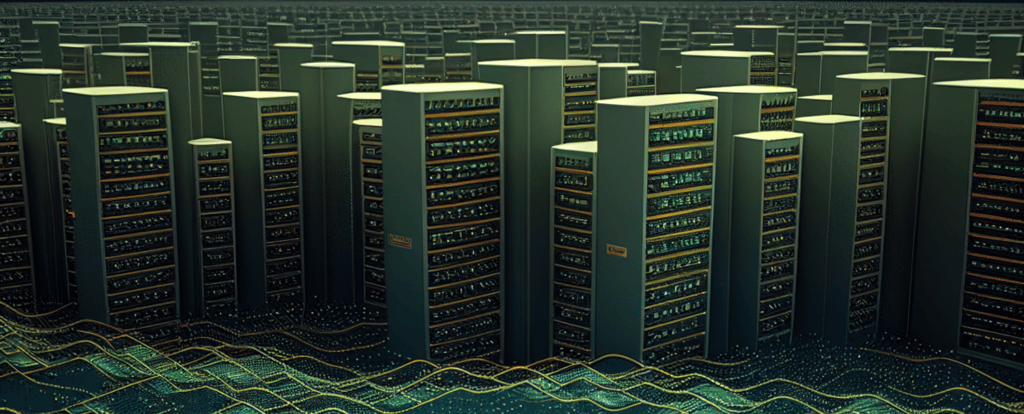
The IT landscape is rapidly changing, with companies becoming increasingly distributed, cloud-driven, and agile. In order to minimize complexity and ensure operational efficiency, it’s critical to maintain full visibility and control over all your IT environments.
Unfortunately, this isn’t an easy task, particularly when considering that most companies now have multiple IT environments with different roles and responsibilities.
In this post, we’ll explore what IT environments are, why they matter, and some tips for selecting which ones you need to use to accomplish your business objectives.
What Is an IT Environment?
“IT environment” is an umbrella term that can refer to both physical and digital computing technologies. Within your overall IT environment, you’ll most likely have a mix of different processes, instances, systems, components, interfaces, and testing labs among other things.
(You can read more here about enterprise IT environments, specifically, if you’re interested.)
Most companies today have multiple IT environments that can live on premises or in the cloud. A growing number of companies are also using hybrid IT environments that leverage both on-premises and cloud infrastructure.
Some companies might only use one cloud provider (e.g., AWS). Others use resources from more than one (e.g., Azure and Google Cloud Platform).
Types of IT Environments to Know About
Here’s a breakdown of the four most common IT environments that companies use today.
1. Operational Environment
An operational environment refers to the physical and virtual infrastructure that companies use to support their software and applications. The main purpose of an IT operational environment is to ensure that the organization has the systems, processes, practices, and services that are necessary to support its software.
IT operations (ITOps) is responsible for maintaining operational stability and efficiency and keeping operating costs to a minimum. Without a robust IT operational environment, it’s impossible to power reliable applications at scale. It’s also hard to secure networks.
Why use an operational environment?
An operational environment is necessary for any organization that uses software and applications to power internal and external applications and workflows. You should use an operational environment if you want to establish a secure, reliable, and cost-effective network to support your business’s needs.
2. Development Environment
A software development environment is a space where developers can create and iterate software freely and without the risk of impacting users. Most development environments run on local servers and machines.
Why use a development environment?
It’s a good idea to use a development environment if your team is actively building and managing software and you need to protect the user experience. By setting up a development environment, you can make changes and improve your software and applications behind the scenes without end users noticing.
Of note, most leading developers today expect to have access to robust development environments and tools. So, if you want to attract top talent, it pays to have the right supporting environment in place.
3. Test Environments
Before you release software to real-world users, it’s important to put the software through extensive testing to make sure it works as designed. While some teams choose to test in production (more on this below), most set up dedicated test environments to detect flaws and vulnerabilities and make sure the software performs to expected standards before shipping a release.
There are a variety of procedures you can perform in a test environment. Some of the most common types of test environments include performance testing, chaos testing, system integration testing, and unit testing.

While test environments don’t have to be an exact replica of a live production environment, it helps to make them as close as possible. This way, you can have an accurate sense of how the software will perform once you roll it out to your users.
Why use a test environment?
A test environment is ideal for companies that don’t want to take any chances with their software. While test environments may initially slow down the pace of production, they ultimately reduce rework and user complaints after a software release.
In light of this, it’s a good idea for DevOps and product teams to discuss testing strategy in advance and determine whether a dedicated test environment is necessary.
4. Production Environments
A production environment, or deployment environment, is a live environment where users can freely interact with software.
A production environment is technically the last step in software development. However, this stage requires a fair amount of monitoring, testing, and refining. By collecting feedback and testing in production, DevOps teams can keep tabs on how the software is performing. They can then make adjustments to ensure it satisfies the needs of its user base.
Why use a production environment?
A production environment is necessary any time you want to bring software out of the conceptual stage and use it to process workflows and drive results. To that end, you can have a live production environment for both internal and external or customer-facing applications.

Challenges That Can Derail Your IT Environments
When you boil it down, IT environments play a critical supporting role for companies today. And for this reason, it’s important to keep them operationally efficient. Here are some of the top challenges that businesses run into today when managing IT environments.
1. System Outages
IT environments are highly complex, making them subject to unplanned outages. Unfortunately, system outages can be extremely expensive and negatively impact the user experience. This can lead to brand and reputation harm.
To avoid outages, it’s important to focus on building a resilient environment with full disaster recovery and seamless failover.
2. Slow and Inefficient Systems
IT environments have limited resources, and they can easily become overloaded. This is especially true if your team is running many simultaneous workloads and tests.
In general, you should have real-time monitoring and alerts and strong communication mechanisms in place to avoid conflicts. You may also want to consult with third-party providers. They can provide extra network and compute resources to facilitate larger workloads.
3. Weak Identity Access Management
One of the risks to having a large IT footprint is the higher number of human and nonhuman identities that you have to manage. If you don’t keep close tabs on identities, they can request excessive permissions. When that happens, they can potentially exploit your valuable resources, leading to security and privacy violations.
To avoid this, you should protect your IT environments with a strong identity access management (IAM) policy. It’s a good idea to centralize all your identities in one area so you don’t lose track of who has access to your sensitive data and environments.
4. Over-Proliferation
It’s easy to lose track of your IT resources when managing multiple IT environments. If you’re not careful, infrastructure, licenses, and servers can over-proliferate and cause operational costs to skyrocket.
The only way to avoid over-proliferation is to track your IT resources from a central location. This way, you can have a clear understanding of what your teams are actively using. You’ll also know how much you’re paying for each service.
Enov8: A One-Stop Shop for IT and Test Environment Management
Enov8 offers a purpose-built business intelligence platform that IT teams can use for full visibility and transparency across all their environments. With the help of Enov8, your team can standardize and automate all aspects of IT management, including data, infrastructure, testing, and production.
Enov8 can improve collaboration and decision-making and also help you manage complex IT systems from a central portal.
To see how Enov8 can revolutionize the way you manage your environments, take the platform for a test drive today, download our free 3 months “Kick Start Edition.

Post Author
This post was written by Justin Reynolds. Justin is a freelance writer who enjoys telling stories about how technology, science, and creativity can help workers be more productive. In his spare time, he likes seeing or playing live music, hiking, and traveling.
